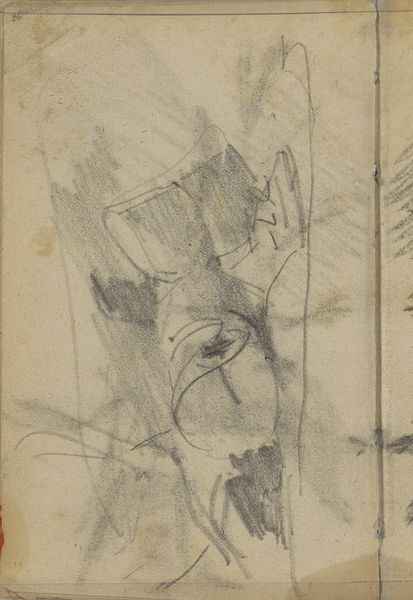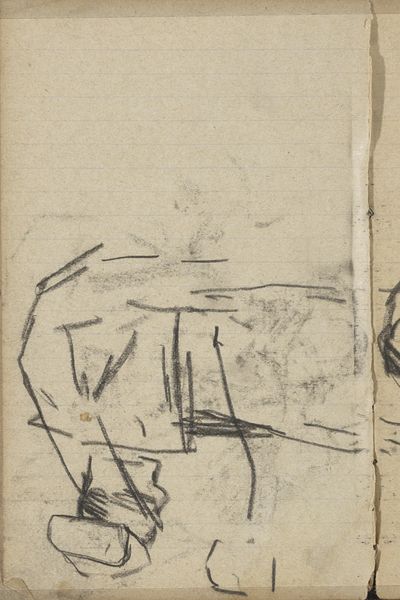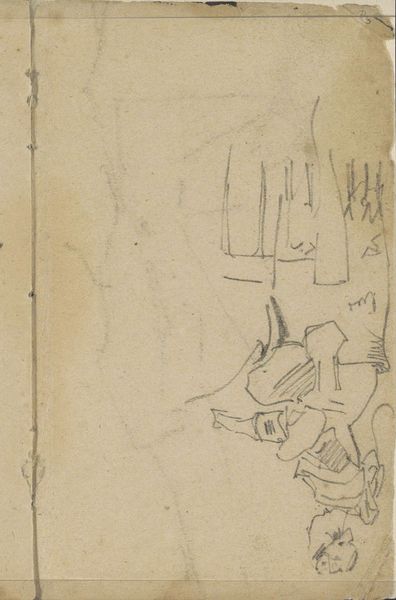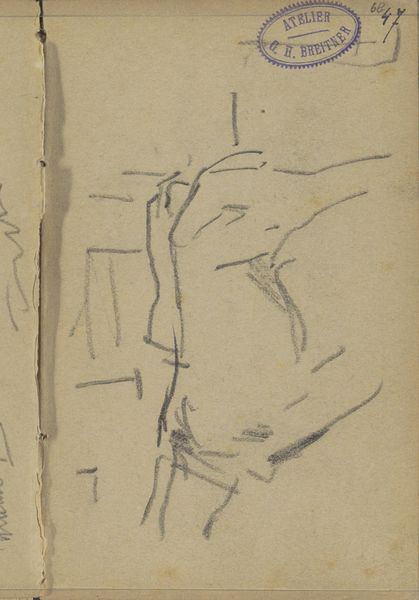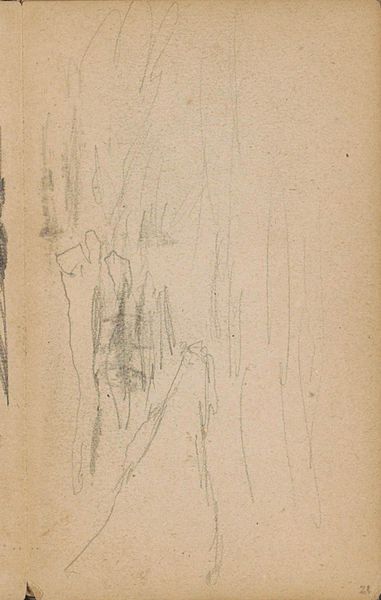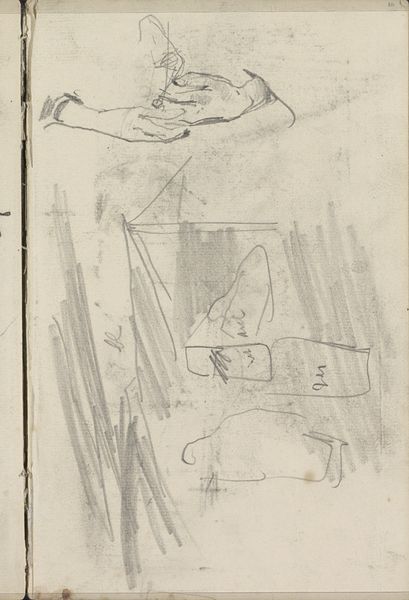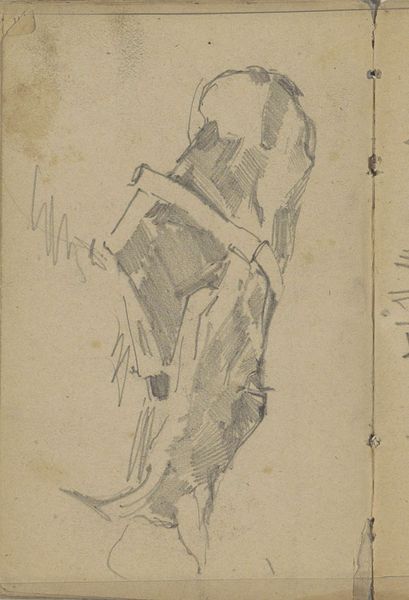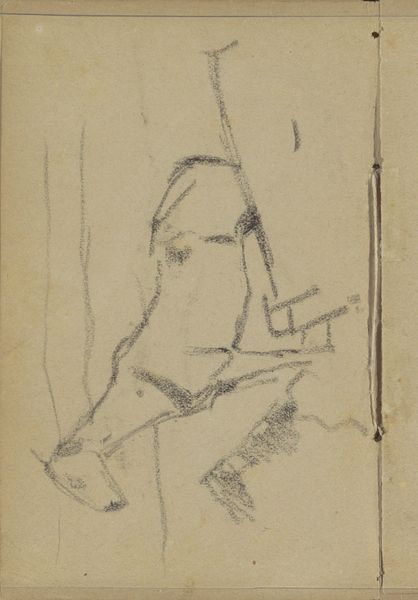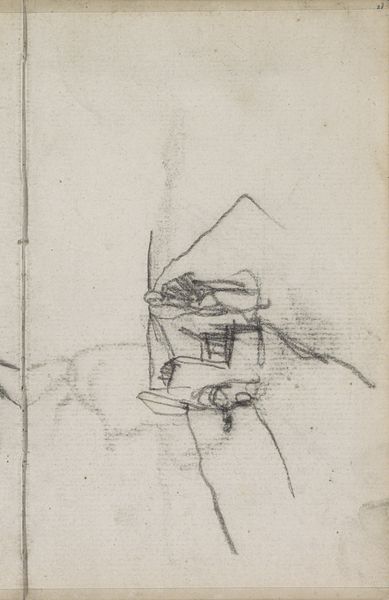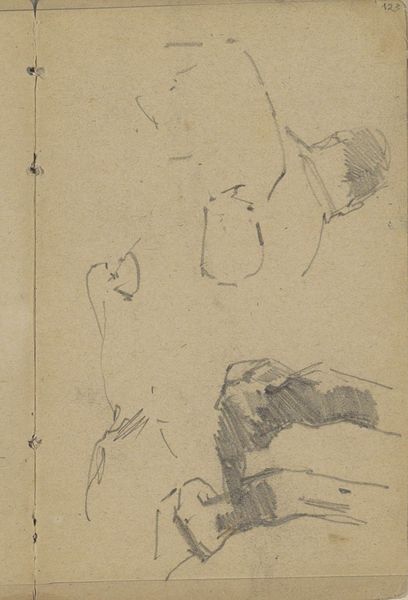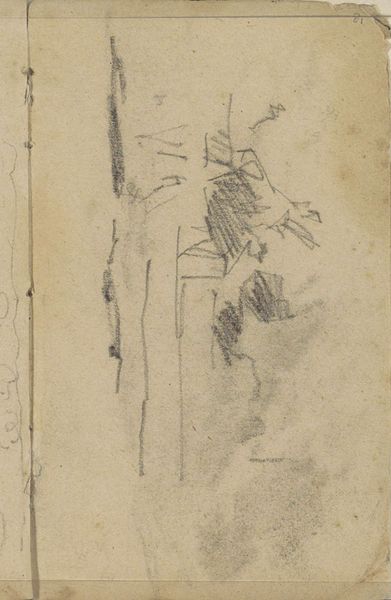
drawing, pencil
#
drawing
#
amateur sketch
#
toned paper
#
light pencil work
#
impressionism
#
sketch book
#
landscape
#
figuration
#
personal sketchbook
#
idea generation sketch
#
sketchwork
#
detailed observational sketch
#
pencil
#
sketchbook drawing
#
sketchbook art
#
realism
Copyright: Rijks Museum: Open Domain
Curator: Welcome. Here we have "Dierstudie," or "Animal Study," a pencil drawing on toned paper from 1881 to 1883, by George Hendrik Breitner, held at the Rijksmuseum. Editor: It feels like a secret glimpse, doesn't it? Like finding a crumpled note left by a curious child, capturing fleeting animal forms with a quick, searching hand. There’s a certain charm to the unfinished quality. Curator: Indeed. These rapid sketches are thought to be from one of Breitner’s sketchbooks, offering insight into his process and the way he observed the world around him. They show the groundwork for larger, more refined compositions. Breitner was part of a movement of artists deeply engaged with modern urban life, so even an "animal study" should be considered as a negotiation of the place of the rural in the age of mechanical reproduction. Editor: You're right. Even though they are just sketches, the animals feel solid. Do you think that’s why he opted for realism over something more romanticized? Curator: Realism allows Breitner to represent these creatures in a way that’s unidealized, almost journalistic in its objectivity. These are not allegorical beasts, but everyday animals, rendered with precision. Editor: There’s this great honesty in seeing his process. It makes you want to grab a pencil and start capturing things, even if they are blurry at first! What a brave practice, leaving the traces visible, keeping everything in a state of becoming! Curator: Absolutely. Breitner wasn’t afraid to show the raw energy of creation, and by engaging in social realism, it democratized art in ways that aligned with broader social justice movements of the time. The choice of ordinary subjects became a political statement in itself, asserting the value and dignity of everyday life, of labor, and the natural world. Editor: It feels incredibly timely, doesn’t it? Finding beauty in the overlooked and mundane feels like such an act of gentle rebellion, especially today. Curator: I agree, this sketch is both of its time, and feels aligned to the present. Thank you for your insights! Editor: Thank you! It has been a joy and enlightening.
Comments
No comments
Be the first to comment and join the conversation on the ultimate creative platform.
